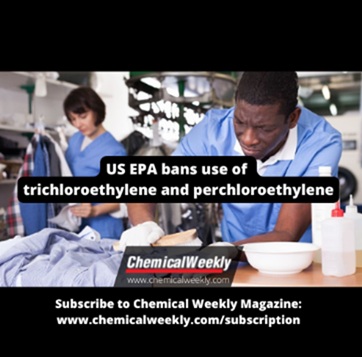US EPA bans use of trichloroethylene and perchloroethylene
TCE is known to cause non-Hodgkin’s lymphoma, and liver and kidney cancer. It can also damage the central nervous system, immune system and reproductive organs, according to the US EPA, with risks even at very small exposure concentrations.
PCE causes liver, kidney, brain and testicular cancer, as well as damage to the immune system, neurotoxicity and reproductive toxicity, US EPA said.
The ban applies to all uses of TCE and all consumer uses and many commercial uses for PCE, the release added.
“It’s simply unacceptable to continue to allow cancer-causing chemicals to be used for things like glue, dry cleaning or stain removers when safer alternatives exist,” Mr. Michal Freedhoff, assistant administrator for the office of chemical safety and pollution prevention, said in the release. “These rules are grounded in the best-available science that demonstrates the harmful impacts of PCE and TCE,” he informed.
The EPA expects to prohibit most of TCE use within one year, the release stated. Some workplace uses of TCE, such as cleaning parts of aircraft and medical devices, will be phased out over a longer period but will only continue with worker protections in place.
For PCE, the agency is finalising a 10-year phaseout for its use in dry cleaning, with the use of the chemical in newly acquired dry-cleaning machines to be prohibited after six months.
PCE and TCE are both non-flammable chlorinated solvents that are volatile organic compounds. PCE can biodegrade into TCE, and PCE may contain trace amounts of TCE as an impurity or a contaminant. The chemicals can often serve as alternatives for each other. For several uses of TCE that will be totally prohibited, there is an analogous use of PCE that can continue safely in perpetuity under workplace controls. Some examples of uses that will be prohibited under the TCE rule, but will continue under the PCE rule include: industrial and commercial use as an energised electrical cleaner, in laboratory use for asphalt testing and recovery, use to make refrigerants and other chemicals, and for vapor degreasing.
Reference: Chemical Weekly

